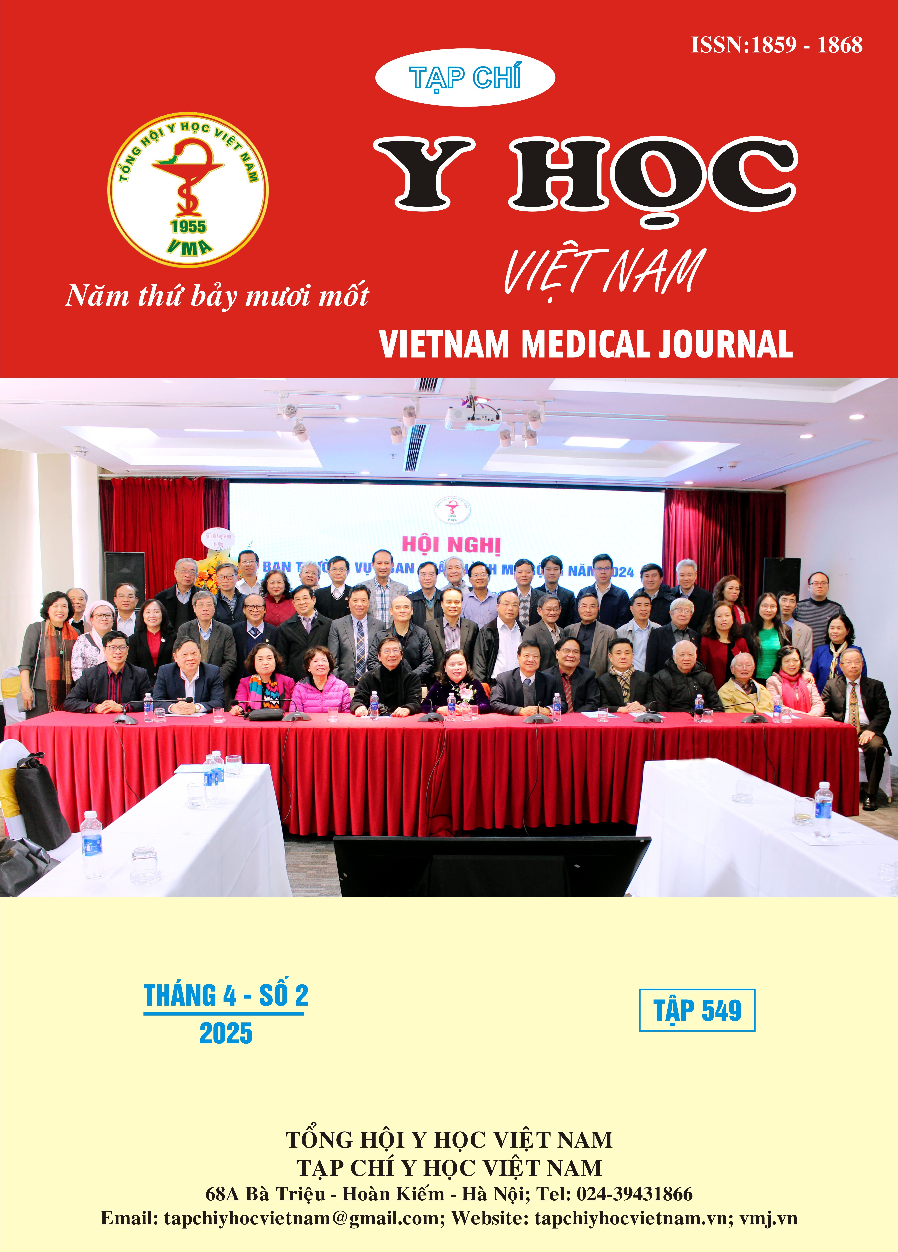ĐẶC ĐIỂM LÂM SÀNG, CẬN LÂM SÀNG, TRẺ MẮC ÁP XE GAN DO VI KHUẨN
Nội dung chính của bài viết
Tóm tắt
Đối tượng: Trẻ được chẩn đoán áp xe gan do vi khuẩn điều trị tại bệnh viện Nhi Trung Ương từ 1/2018 – 7/ 2024. Mục tiêu: mô tả đặc điểm lâm sàng, cận lâm sàng trẻ mắc áp xe gan do vi khuẩn. Kết quả: Phân tích số liệu từ 31 bệnh nhi chúng tôi thấy các lứa tuổi đều có ca bệnh, phân bố bệnh ở cả 3 vùng địa lý. Triệu chứng nhiễm khuẩn cấp tính như sốt (90,3%), đau vùng gan (83,9%); gan to (87,1%); vàng da (6,5%). Thiếu máu nhẹ và vừa chiếm tỷ lệ cao (13/31). Trung bình số lượng bạch cầu máu 18,8 ± 10,3 G/L. Định lượng Protein, Albumin, Prothrombin ở ngưỡng thấp chiếm tỷ lệ rất thấp. GOT tăng trên 40 mmol/L chiếm tỷ lệ 35,5%; GPT tăng trên 40 mmol/L chiếm tỷ lệ 38,7%; giá trị Tỷ lệ Prothrombin dưới 60% chiếm tỷ lệ 12,9%. Số trường hợp có 1 ổ tổn thương và từ 3 ổ trở lên chiếm tỷ lệ cao (54,8 và 35,5%). Kết luận: Áp xe gan do vi khuẩn gặp ở mọi lứa tuổi. Triệu chứng lâm sàng gồm sốt cao, đau bụng vùng gan, gan to. Các chỉ số CRP, Bạch cầu trong máu tăng cao. Tỷ lệ suy giảm chức năng gan thấp. Siêu âm và chụp CT, MRI ổ bụng có thể cho chẩn đoán chính xác.
Chi tiết bài viết
Từ khóa
Áp xe gan do vi khuẩn sinh mủ ở trẻ em, Pyogenic liver abscess in children
Tài liệu tham khảo
2. Tsai FC, Huang YT, Chang LY, et al. Pyogenic liver abscess as endemic disease, Taiwan. Emerging infectious diseases. Oct 2008;14(10): 1592-600. doi:10.3201/eid1410.071254
3. Barnes PF, De Cock KM, Reynolds TN, et al. A comparison of amebic and pyogenic abscess of the liver. Medicine. Nov 1987;66(6):472-83. doi:10.1097/00005792-198711000-00005
4. Hsu YL, Lin HC, Yen TY, Hsieh TH, Wei HM, Hwang KP. Pyogenic liver abscess among children in a medical center in Central Taiwan. Journal of microbiology, immunology, and infection = Wei mian yu gan ran za zhi. Jun 2015;48(3):302-5. doi:10.1016/j.jmii.2013.08.009
5. Yeh PJ, Chen CC, Lai MW, et al. Pediatric Liver Abscess: Trends in the Incidence, Etiology, and Outcomes Based on 20-Years of Experience at a Tertiary Center. Front Pediatr. 2020;8:111. doi:10.3389/fped.2020.00111
6. Grossar L, Hoffman I, Sokal E, Stéphenne X, Witters P. Liver abscesses in the Western pediatric population. Acta gastro-enterologica Belgica. Jul-Sep 2022;85(3): 439-445. doi:10. 51821/85.3.10211
7. Ba ID, Ba A, Faye PM, et al. [Particularities of liver abscesses in children in Senegal: Description of a series of 26 cases]. Archives de pediatrie: organe officiel de la Societe francaise de pediatrie. May 2016;23(5):491-6. Particularités des abcès du foie chez l'enfant au Sénégal: description d'une série de 26 cas. doi:10. 1016/j.arcped.2016.02.018
8. de Kolster CE, Guerreiro N, et al. [Hepatic abscess in children: analysis of 20 cases]. Gen. Jul-Sep 1990;44(3):221-6. Abscesos hepáticos en niños: análisis de 20 casos.
9. Serraino C, et al. Characteristics and management of pyogenic liver abscess: A European experience. Medicine. May 2018; 97(19): e0628. doi:10.1097/md. 0000000000010628
10. Lê Lệnh Lương. Đặc điểm hình ảnh và giá trị của siêu âm, chụp cắt lớp vi tính trong chẩn đoán, theo dõi bệnh sán lá gan lớn. Luận Án Tiến Sĩ Y Học, trường ĐHY Hà Nội. 2016;


